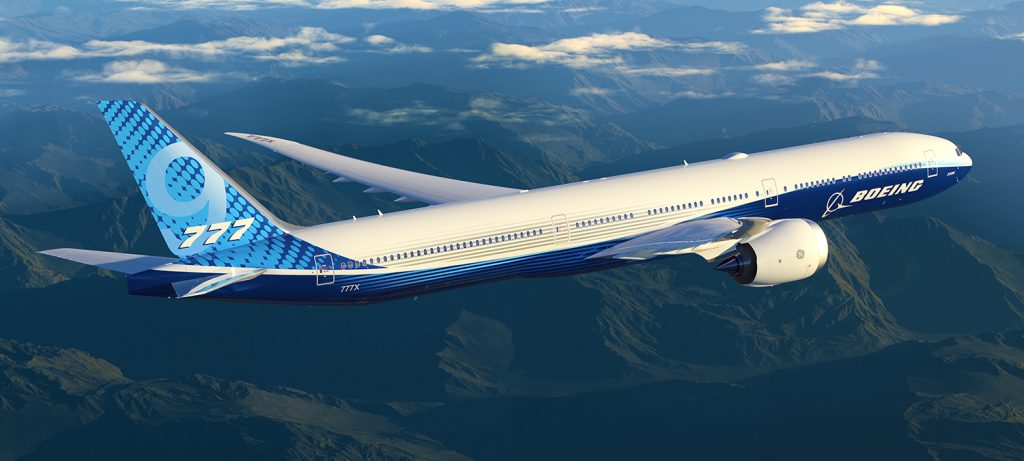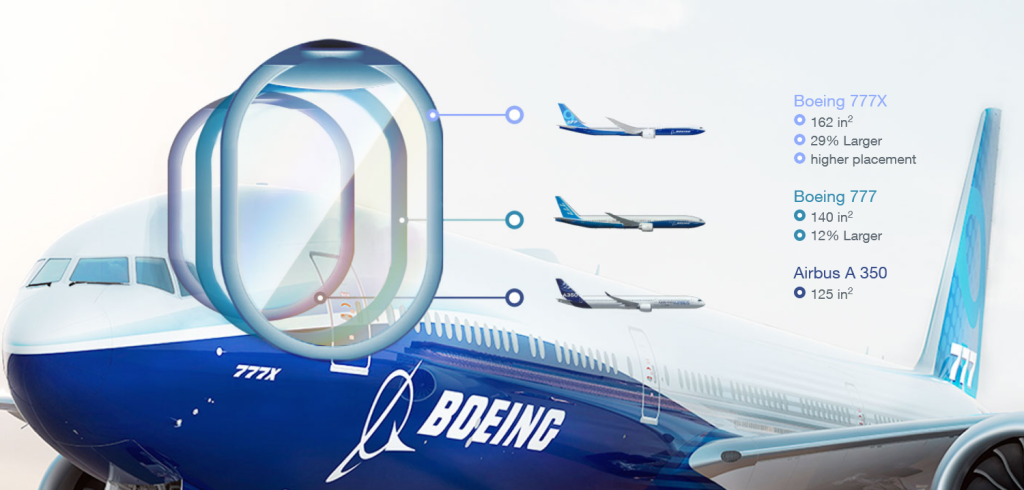- Boeing is rushing 777-F jet production ahead of a potential machinists strike, leading to out-of-sequence work and cannibalization of parts due to supply chain issues.
- FAA concerns grow as unfinished jets with missing parts are being pushed through production, raising safety and quality control red flags.
- The Boeing 777X program faces further delays due to cracked thrust links in test aircraft, putting its certification and entry into service at risk.
In the fast-paced world of aviation manufacturing, delays cost both reputation and finances. Boeing, the world’s largest aerospace company, faces this reality.
With a looming strike involving over 33,000 machinists, Boeing is reportedly pushing 777-F jets through production at its Everett facility, often sacrificing quality.
This scramble is causing significant internal chaos, raising concerns over safety, efficiency, and long-term consequences of these decisions.

The Looming Machinists’ Strike and Its Impact on Boeing
Boeing braces for a potential machinists’ strike, with the production of its 777-F jets taking center stage. The strike, which could start as early as next week, may involve over 33,000 employees.
The key concern for Boeing remains the halt of critical manufacturing processes, particularly affecting the 777-F program.
How the Strike Could Affect Production Timelines
Machinists are the backbone of Boeing’s production, especially for complex jets like the 777-F and 777-9. The fear of a prolonged strike pushed Boeing to accelerate production to complete three 777-F aircraft before the strike deadline.
However, this rush led to significant deviations from the normal workflow, with jobs being completed out of sequence, sometimes outside the factory.
Cannibalization of Aircraft Components
Amid hurried production, reports suggest Boeing cannibalized components from other aircraft within the factory to meet delivery deadlines. This practice raises red flags when done without proper documentation or transparency. C
annibalizing parts violates Federal Aviation Administration (FAA) regulations if undocumented, further complicating Boeing’s strained relationship with regulators.
Supply Chain Woes: A Problem Beyond Boeing’s Control
One key factor exacerbating Boeing’s situation is the global supply chain crisis. Over the past two years, the aviation industry, like many others, faced severe disruptions due to the pandemic, geopolitical tensions, and logistical bottlenecks.
These issues directly impacted Boeing’s ability to source critical components for the 777 and other models.
How Supply Chain Shortages Are Impacting Boeing 777 Production
At Boeing’s Everett facility, the shortage of parts created a chaotic environment. Reports suggest five Boeing 777-F jets left the factory with only minimal systems installed.
This shortage of components forced mechanics to install parts drastically out of sequence, undermining the integrity of the production line. One delayed part causes delays for other systems, which are all interdependent.
In some cases, Boeing took extreme measures, such as removing parts from completed Boeing 777-9s stored at Everett Paine Field.
Cannibalization, if undocumented, violates FAA regulations and puts future deliveries at risk, especially if critical components cannot be replaced quickly.

Safety Concerns: Quality Control Under Scrutiny
Boeing faced increased scrutiny from regulatory bodies, including the FAA, following a series of safety incidents in recent years. The grounding of the 737 MAX due to fatal crashes exposed significant issues within Boeing’s production and quality control processes.
As a result, the FAA placed production caps on Boeing’s manufacturing lines and mandated a slow-down to improve quality control.
Boeing’s Push to Meet Deadlines Compromising Safety?
Despite these mandates, reports from the Everett factory indicate Boeing continues pushing production, compromising quality control. Employees on the 777 production line raised concerns about unfinished jobs and missing parts on aircraft moving down the line.
The FAA requires strict adherence to safety standards, and any deviation from these guidelines puts the company at risk of regulatory penalties and potentially endangering passengers.
Boeing’s internal documents show the company acknowledged some issues and reviews aircraft in storage to ensure accurate records. However, cannibalization and out-of-sequence work point to deeper problems within Boeing’s production system.
The Future of the Boeing 777X: More Delays on the Horizon?
The Boeing 777X, the next-generation wide-body jet, saw delays by four years. Initially expected to enter service in 2020, the aircraft now faces another two-year delay, with certification still pending.
This delay compounded by the discovery of cracks in the thrust links of all four test aircraft halted flight testing.
Will the Latest Defects Push Back the 777X Further?
Boeing identified thrust link issues on one test aircraft, where one thrust link on an engine was severed. This discovery suspended flight tests and inspections of the other three test planes, all revealing similar cracks. These cracks pose serious risks, as thrust links stabilize the engines during flight.
Boeing replaces the problematic component and resumes flight testing once resolved. Delays in certification may push back the 777X’s entry into service even further.
For an aircraft Boeing heavily marketed as the future of long-haul travel, these continued delays deal a significant blow.

Boeing’s Response to the Crisis: Can It Turn the Tide?
Boeing acknowledged the challenges but maintains safety and quality remain top priorities. The company reviews documentation for all aircraft in storage to ensure proper records.
Additionally, Boeing urged employees aware of any undocumented parts removal to come forward via its internal ‘Speak Up’ system.
Addressing the Supply Chain and Labor Disputes
In the short term, Boeing focuses on mitigating the impact of the potential machinists’ strike. Labor disputes are common in the aerospace industry, but the timing of this strike, amid existing production challenges, poses a serious threat to Boeing’s bottom line.
To address supply chain shortages, Boeing will work closely with suppliers to streamline the flow of critical components.
This may involve renegotiating contracts, diversifying its supplier base, or investing in in-house manufacturing capabilities for certain parts.
What’s Next for Boeing: Long-Term Outlook
Boeing’s production challenges highlight a broader issue within the aerospace industry—balancing delivery deadlines with maintaining quality control. In the near future, Boeing will focus on stabilizing the 777 production line and resolving thrust link issues with the 777X.
However, Boeing’s long-term outlook remains uncertain. With the 737 MAX still recovering from its grounding, and the 777X facing delays, Boeing must find a way to regain the confidence of customers and regulators. This requires fixing production issues and implementing a culture of accountability throughout the company.
Boeing’s Path to Recovery: A New Approach to Manufacturing?
Boeing will need to adopt a more agile manufacturing approach to recover from this crisis. This could involve greater use of digital technologies, such as 3D printing, to produce parts on demand and reduce reliance on a global supply chain.
Additionally, Boeing must rethink its labor relations strategy to avoid future strikes and ensure a stable workforce.

Conclusion: A Critical Moment for Boeing
Boeing’s rush to complete 777-F jets before the impending machinists’ strike underscores immense pressures facing the company. Supply chain issues, regulatory scrutiny, and internal chaos contributed to the current situation at the Everett facility.
As Boeing grapples with these challenges, it must focus on maintaining safety and quality control while meeting delivery deadlines.
The coming weeks will be crucial for Boeing’s future as it seeks to navigate labor disputes, resolve supply chain bottlenecks, and ensure the 777X program stays on track. The aviation industry will closely watch how Boeing handles this critical moment.
Key Takeaways
- Rushed Production Amid Strike Threat: Boeing is accelerating 777-F jet production to complete critical work before a potential machinists strike, leading to significant deviations in the assembly process.
- Supply Chain Disruptions: Component shortages are forcing Boeing to cannibalize parts from other aircraft, exacerbating quality control issues and raising concerns about regulatory compliance with the FAA.
- Delays in 777X Program: The discovery of cracks in the 777X test aircraft’s thrust links adds further delays to the already delayed program, impacting its timeline for certification and entry into service.


































